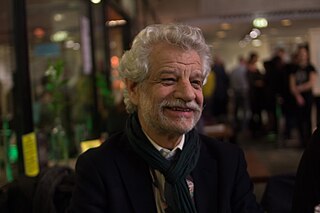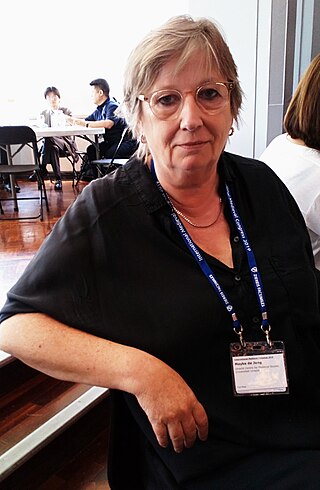Related Research Articles

The Vrije Universiteit Amsterdam is a public research university in Amsterdam, Netherlands, being founded in 1880. The VU Amsterdam is one of two large, publicly funded research universities in the city, the other being the University of Amsterdam (UvA). The literal translation of the Dutch name Vrije Universiteit is "Free University". "Free" refers to independence of the university from both the State and the Dutch Reformed Church. Both within and outside the university, the institution is commonly referred to as "the VU". Although founded as a private institution, the VU has received government funding on a parity basis with public universities since 1970. The university is located on a compact urban campus in the southern Buitenveldert neighbourhood of Amsterdam and adjacent to the modern Zuidas business district.

The University of Amsterdam is a public research university located in Amsterdam, Netherlands. Established in 1632 by municipal authorities, it is the fourth-oldest academic institution in the Netherlands still in operation.

Robertus Henricus "Robbert" Dijkgraaf, is a Dutch theoretical physicist, mathematician and string theorist, and the Minister of Education, Culture and Science in the Netherlands from 2022 until 2024. From July 2012 until his inauguration as a minister, he had been the director and Leon Levy professor at the Institute for Advanced Study in Princeton, New Jersey, and a tenured professor at the University of Amsterdam.

Radboud University (abbreviated as RU, Dutch: Radboud Universiteit, formerly Katholieke Universiteit Nijmegen) is a public research university located in Nijmegen, the Netherlands. RU has seven faculties and more than 24,000 students.

Dirk Hendrik Theodoor Vollenhoven was a Dutch philosopher.

Hugo van der Goes was one of the most significant and original Early Netherlandish painters of the late 15th century. Van der Goes was an important painter of altarpieces as well as portraits. He introduced important innovations in painting through his monumental style, use of a specific colour range and individualistic manner of portraiture. From 1483 onwards, the presence of his masterpiece, the Portinari Triptych, in Florence played a role in the development of realism and the use of colour in Italian Renaissance art.
Ernst van de Wetering was a Dutch art historian and an expert on Rembrandt and his work.

The Potchefstroom University for Christian Higher Education was a South African university located in Potchefstroom. Instruction was mainly in Afrikaans. In 2004, the university was merged with other institutions to create the North-West University.

Thomas Elsaesser was a German film historian and professor of Film and Television Studies at the University of Amsterdam. He was also the writer and director of The Sun Island, a documentary essay film about his grandfather, the architect Martin Elsaesser. He was married to scholar Silvia Vega-Llona.
Jacobus Ruurd "Jaap" Bruijn, was a Dutch maritime historian. He was professor of maritime history at the University of Leiden from 1979 until his retirement in 2003. During his 41-year teaching career as The Netherlands' only university professor of maritime history, he guided the doctoral theses of at least 49 graduate students.

Antonius Adrianus Gerardus Maria "Ronald" van Raak is a Dutch politician, non-fiction writer and former academic. A member of the Socialist Party, he has been a member of the House of Representatives since 30 November 2006. He focuses on matters of home affairs, kingdom relations, the royal house and general affairs. From 2003 to 2006, he was a Senator of the Netherlands.

Madonna of the Dry Tree or Our Lady of the Barren Tree is a small oil-on-oak panel painting dated c. 1462–1465, attributed to the Early Netherlandish painter Petrus Christus. Its dramatic imagery shows the Virgin Mary holding the Christ Child within a tree, surrounded by black, withered branches forming a crown of thorns.
SEO Amsterdam Economics (SEO) is a scientific institute for economic research commissioned by ministries or businesses.
Hermanus Johannes "Herman J." Adèr is a Dutch statistician/methodologist and consultant at the Vrije Universiteit, the VU University Medical Center and the University of Stavanger, known for work on Methodological Modelling and Social Research Methodology.
Sytse Strijbos is a Dutch academic, former lecturer of Philosophy of technology at the Vrije Universiteit in Amsterdam and at Potchefstroom University in South Africa, and chairman of the International Institute for Development and Ethics IIDE, known for his work on systems science.

A Goldsmith in His Shop is a 1449 painting by Petrus Christus, a leading painter in Bruges. It is now in the Metropolitan Museum of Art. This is an oil painting on an oak panel that measures 100.1 x 85.8 cm overall and the painted surface is 98 x 85.2 cm. An inscription at the bottom of the painting states "m petr[vs] xpi me· ·fecit·ao 1449· ". In addition, the inscription has an emblem of a clock with a mechanical linkage to a heart, Christus's emblem.

Thomas Lance Rodney Wilson was a New Zealand art historian and museum professional. He served as director of a number of major New Zealand museums and art galleries, including the Christchurch Art Gallery, Auckland Art Gallery and Auckland War Memorial Museum.

Mayke de Jong is a Dutch historian and Professor Emerita of Medieval History at Utrecht University. Her research focuses on the political and religious history of the early Middle Ages.
Ferdinand Jacobus van Ingen was a Dutch scholar of Germanistics and a professor of German literature at the Vrije Universiteit Amsterdam from 1972 to 1998.
Bibi van der Velden is a Dutch jewellery designer and sculptor who uses unexpected materials and shapes in her creations. She is also the founder and creative director of Auverture, a contemporary jewellery platform.
References
- ↑ Velden, H.T. van der at NIAS website.
- ↑ "dhr. prof. dr. H.T. (Hugo) van der Velden - Universiteit van Amsterdam". www.uva.nl. Retrieved 22 November 2015.
- ↑ "The Donor's Image".